
Vancouver-based developer Westbank has unveiled plans for a collection of mixed-use projects in downtown San Jose, California. The development will feature six new or renovated buildings by leading architects including Kengo Kuma and Associates, Bjarke Ingels Group, Studio Gang, James K.M. Cheng Architects, and WRNS Studio. The buildings within the Silicon Valley initiative will combine to deliver 700 new residences and 5 million square feet of workspace, in what Westbank sees as an effort to “inspire the next generation of innovators by creating a healthier, more beautiful community.”
While blending a variety of architectural forms, the six projects are linked by an effort to respond to the climate crisis, with each building targeting deep carbon reductions for both operational and embodied carbon. “What we are proposing is a collection of net zero life cycle carbon buildings adjacent to inspiring residential,” says Westbank. “We propose workspace that merges nature and office space, to break that barrier down and ideally, encourage being within nature to the greatest extent possible.” Westbank have a track record working with big-named architects, as explained in our interview with Westbank CEO Ian Gillespie.

Bjarke Ingels Group have served as design architect for two of the buildings. The Bank of Italy, built in 1927, is to be restored into a fully commercial building with retail at the base and office workspaces above grade. The interior has been designed to restore the building’s original grandeur while also meeting modern economic needs, achieved by using original materials through reinterpretive applications. The developers estimate that reusing this existing building will save 71% on embodied carbon emissions versus a new building of the same size, while touchless fixtures and smart cooling systems will reduce water use by 40%.
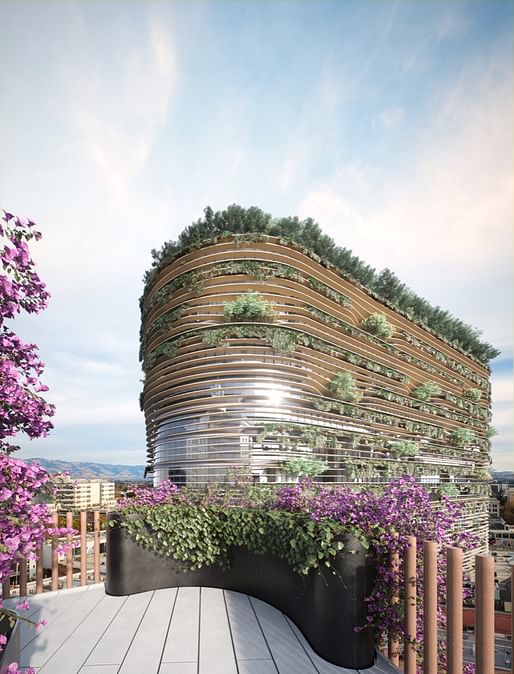
Meanwhile, BIG has also designed The Energy Hub, a sister building of the Bank of Italy. The two buildings will share energy systems, parking, and other infrastructures, while connecting public realm spaces and alleyways will link the buildings above ground. The street level of the Energy Hub is activated by retail units, with residential units contained in the lower levels, and workspaces on upper levels.

Along 180 Park Avenue, Kengo Kuma & Associates and Adamson Associates Architects (local architects) have designed Park Habitat, a fully commercial building with retail at grade, workspaces above grade, and an amenity rooftop. Reflecting on the scheme, Kuma describes Park Habitat as “a nature-based concept for living and working in a city known for its innovative spirit.” The scheme will feature a biophilic façade with vegetative screening, a blackwater reuse system, and low carbon passive design including a Green Lung at the heart of the building mass.
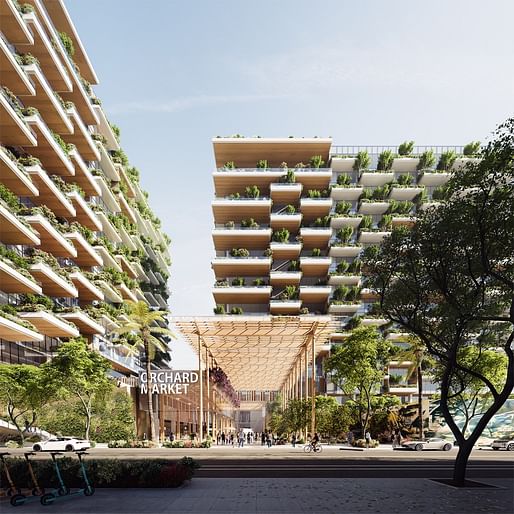
On 2nd Street, meanwhile, a collection of projects known as the Orchard Buildings will offer residential and workplace uses. The Orchard Residential Building is designed by James K.M. Cheng Architects with Steinberg Hart, and features a façade of vertical landscaped residential terraces above street-level retail. The Orchard Workplace Buildings are designed by WRNS Studio, a fully commercial building with an at-grade food hall/market, and a workspace podium with two towers on top. The workplace buildings feature a range of floorplate sizes to cater to a wide variety of tenants within the Bay Area.
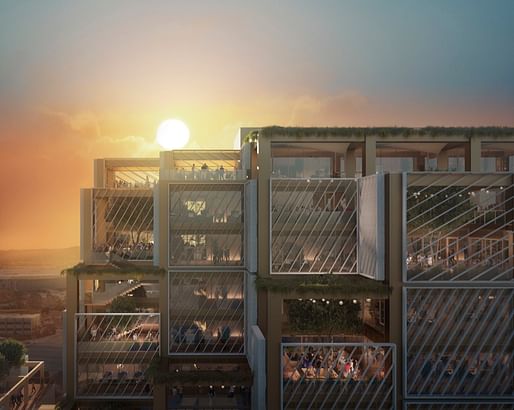
The final building, named “Arbor” is designed by Studio Gang. Arbor will consist of an existing building (the Davidson Building) which will be adaptively reused along with a new 14-story mass timber commercial building, with retail at grade and workplaces above grade. According to Jeanne Gang, “Arbor’s 14-storey mass timber structure not only reinforces the idea of working in a tree fort, but also reduces the project’s embodied carbon footprint as compared to traditional structures like concrete or steel by 35%. Taken all together, Arbor is an important contributor to our overarching goal of a net zero carbon initiative.”
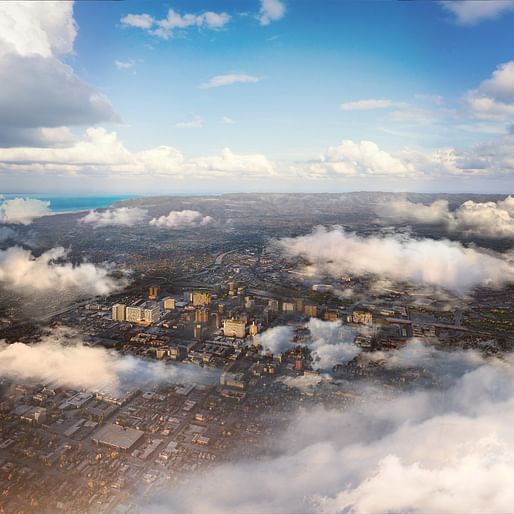
The projects are being developed in partnership by Westbank, Urban Community, Peterson, and OPTrust.
See below for more images of each individual project within the development. All images are via Westbank.
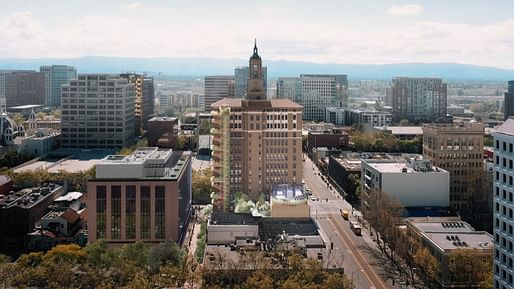
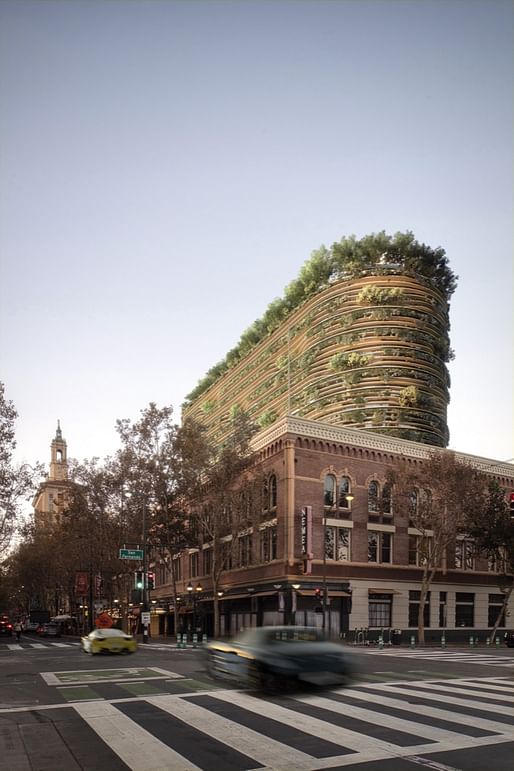
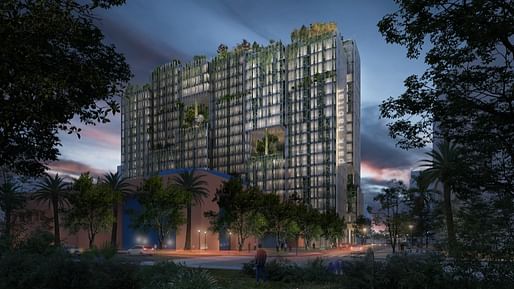
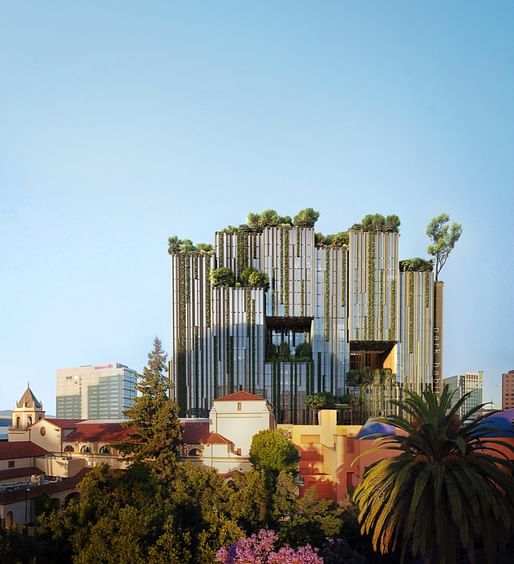

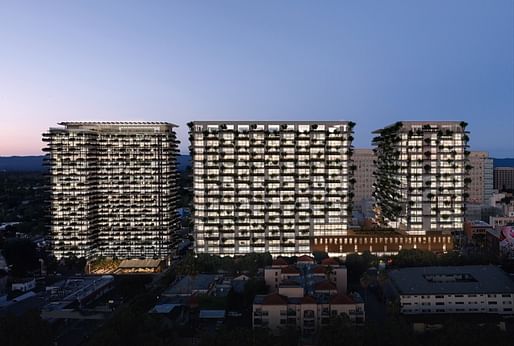
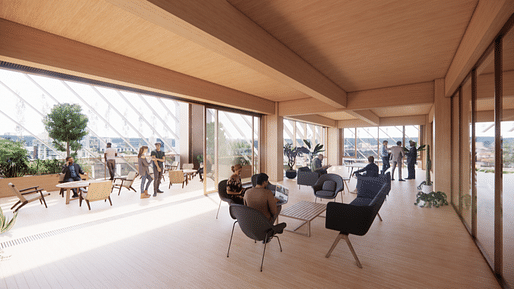
No Comments
Block this user
Are you sure you want to block this user and hide all related comments throughout the site?
Archinect
This is your first comment on Archinect. Your comment will be visible once approved.